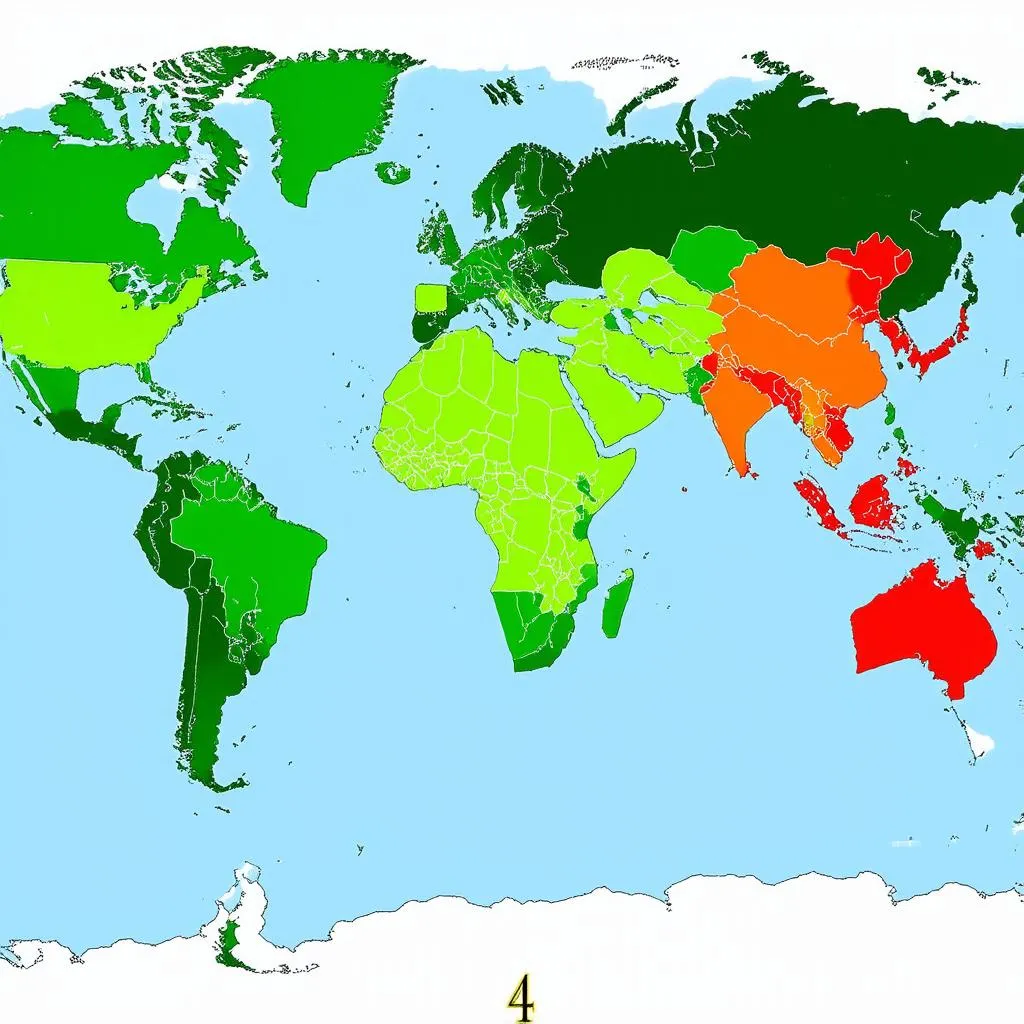Have you ever stumbled upon the term “travel advisory” while planning your dream vacation and wondered, “What does that even mean?” Don’t worry, you’re not alone. It can seem like a cryptic message from the travel gods, potentially throwing a wrench in your well-laid plans. But fear not, intrepid traveler! We’re here to demystify travel advisories and equip you with the knowledge to navigate them like a pro.
Decoding the Language of Travel Advisories
In essence, a travel advisory is an official warning issued by a government to its citizens about potential safety or security risks in a specific country or region. Think of it as a friendly heads-up from your government, saying, “Hey, be extra cautious if you’re heading to this place.”
These advisories are usually based on a variety of factors, including:
- Political instability: Think protests, demonstrations, or even the potential for violence.
- Health risks: This could be anything from outbreaks of infectious diseases to inadequate healthcare facilities.
- Natural disasters: Countries prone to earthquakes, hurricanes, or volcanic eruptions might see advisories issued.
- Crime rates: Areas with high crime rates, especially against tourists, are often flagged.
- Terrorism: Sadly, this remains a concern in certain parts of the world.
Levels of Travel Advisories: From Exercise Caution to Reconsider Travel
To make things easier to understand, most countries use a tiered system for their travel advisories. For instance, the US Department of State uses four levels:
- Level 1 – Exercise Normal Precautions: This is the lowest level, indicating that you should take standard safety measures like you would anywhere else. Think being aware of your surroundings in crowded areas like Times Square in New York City or using reputable transportation options.
- Level 2 – Exercise Increased Caution: This signifies that there are some heightened risks in the destination. For example, you might encounter petty crime in Barcelona’s bustling La Rambla district, so safeguarding your belongings is crucial.
- Level 3 – Reconsider Travel: This level indicates serious risks to your safety and security. It might be wise to postpone your trip or consider alternative destinations.
- Level 4 – Do Not Travel: This is the highest level, signifying an extremely dangerous situation. The government strongly advises against all travel to the area.
How Seriously Should You Take a Travel Advisory?
Now, for the million-dollar question – how seriously should you take these advisories? Well, it’s always best to err on the side of caution.
“Travel advisories are like the fine print on a contract – you should always read them carefully,” says travel expert, Dr. Amelia Jones, author of “Safe Travels: A Guide to Navigating International Travel.”
While advisories shouldn’t necessarily be a deal-breaker, they should inform your decision-making process. Weigh the risks, consider your comfort level, and always stay informed about the latest developments.
For instance, if you’re planning a trip to a country under a Level 2 advisory due to petty crime, you might decide to proceed but take extra precautions like keeping valuables secure and avoiding poorly lit areas at night. However, a Level 3 advisory due to civil unrest might warrant postponing your trip to a safer time.
Planning Your Trip: Essential Tips for Safe Travels
Regardless of your destination, proper planning is key to a safe and enjoyable trip. Here are a few tips:
- Check travel advisories: Start by visiting your government’s official travel advisory website for the latest information on your destination.
- Enroll in STEP: If you’re a US citizen, consider enrolling in the Smart Traveler Enrollment Program (STEP). This free service allows you to receive alerts and makes it easier for the US embassy or consulate to reach you in an emergency.
- Purchase travel insurance: Travel insurance can be a lifesaver in case of unexpected events like medical emergencies, trip cancellations, or lost luggage.
- Research your destination: Learn about local customs, laws, and any potential safety concerns.
- Stay informed: Stay updated on current events and potential risks throughout your trip.
FAQs: What You Need to Know about Travel Advisories
What if my destination has a travel advisory, but I already booked my trip?
First, don’t panic! Check the terms and conditions of your travel insurance policy, as some policies offer coverage for cancellations related to travel advisories. You can also contact your airline or tour operator to see if they offer any flexibility with rebooking or refunds.
Where can I find the most up-to-date travel advisories?
Your government’s official travel website is the best source for the most accurate and current information. For US citizens, that’s the US Department of State website.
Are travel advisories mandatory?
No, travel advisories are not mandatory. They are simply recommendations to help you make informed decisions about your travel plans.
Can travel advisories change?
Yes, travel advisories can change frequently based on evolving situations. It’s essential to stay informed and check for updates before and during your trip.
Embrace the Journey, Travel Smart
Remember, travel is about embracing the unknown, experiencing new cultures, and creating unforgettable memories. While travel advisories might seem daunting, they’re valuable tools to help you navigate the world safely and responsibly. By staying informed, planning ahead, and traveling smart, you can turn those travel dreams into a reality.
 World Map with Travel Advisory Levels
World Map with Travel Advisory Levels
 Tourist Checking Travel Advisory on Phone
Tourist Checking Travel Advisory on Phone
Looking for more travel tips and resources? Visit TRAVELCAR.edu.vn to discover your next adventure! And don’t forget to share your travel experiences and tips in the comments below!
